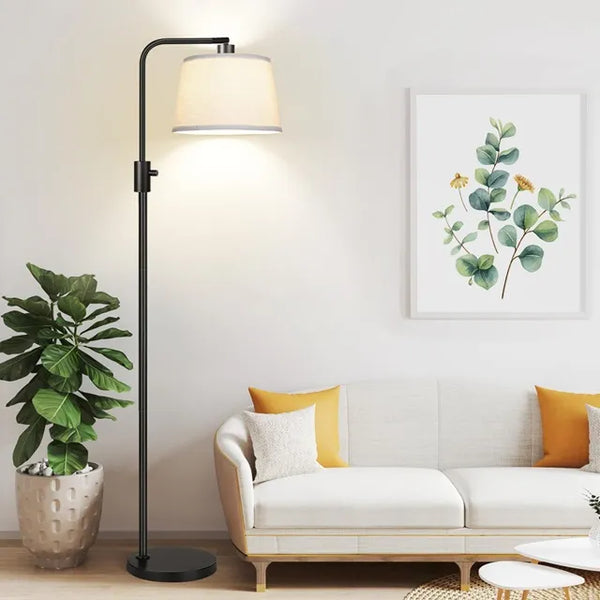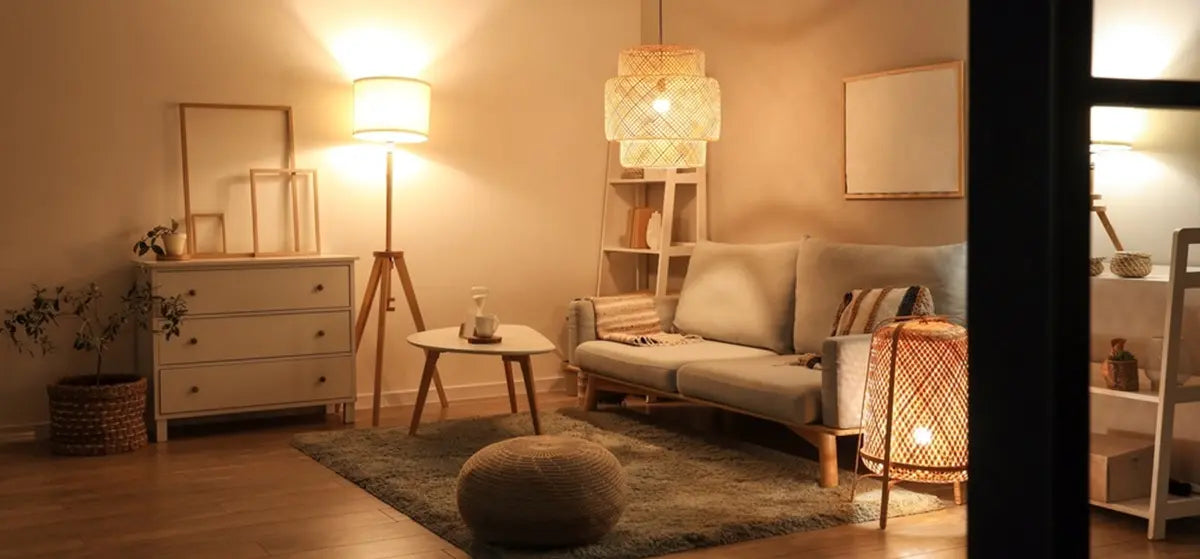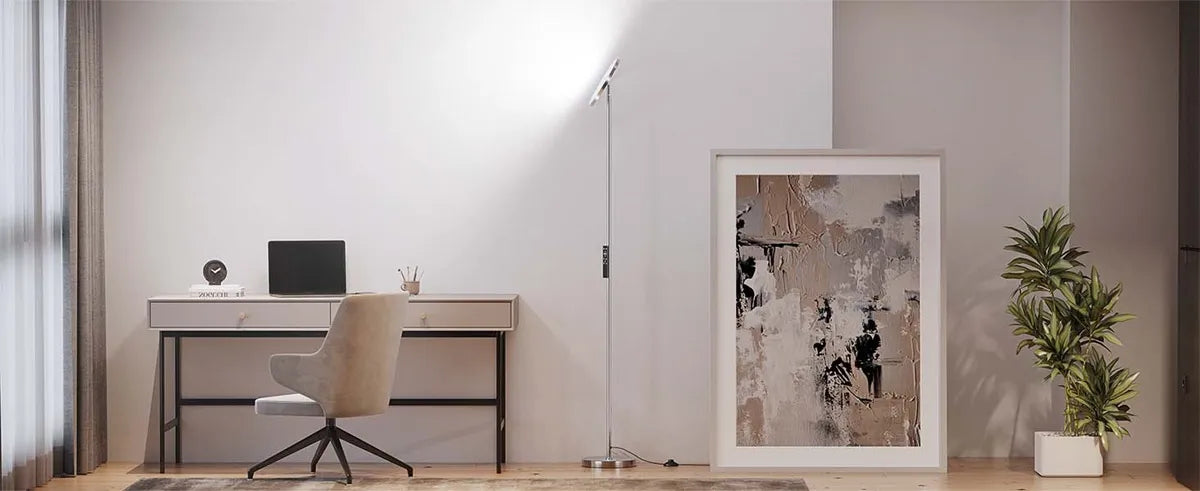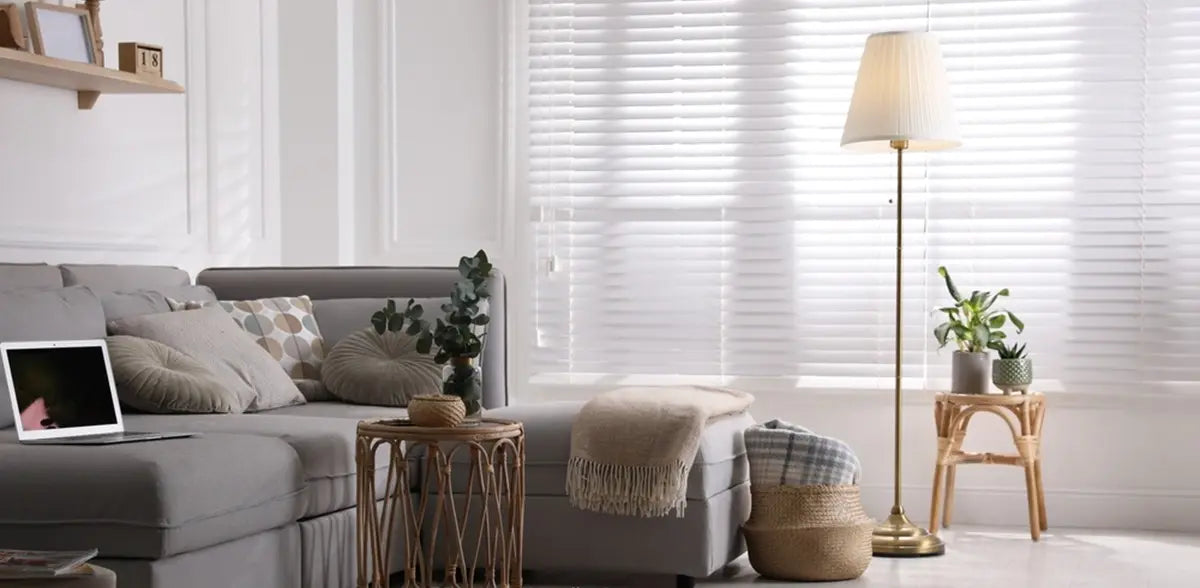Lighting can make or break a room's ambiance. As an interior design enthusiast, I've discovered that floor lamps are a game-changer when it comes to illuminating spaces. They're versatile, stylish, and can transform any room from drab to fab.
In this guide, I'll walk you through everything you need to know about how to light a room with floor lamps.
We'll cover choosing the right lamp, placement strategies, and how to create the perfect ambiance. Let's dive in!
Why Choose Floor Lamps?

Before we get into the nitty-gritty, let's talk about why floor lamps are such a great choice:
- Flexibility: Easy to move and adjust
- Variety: Countless styles to match any decor
- Space-saving: No need for ceiling installations or table space
- Layered lighting: Perfect for creating depth and dimension
Assessing Your Lighting Needs

To effectively light a room with floor lamps, you first need to understand your lighting needs.
Purpose of Lighting
Consider what you'll be using the room for:
- Reading nook? You'll need task lighting.
- Living room? Ambient lighting is key.
- Showcasing art? Accent lighting is your friend.
Room Size and Layout
The size and layout of your room play a crucial role in how to light a room with floor lamps. Here's a quick guide:
| Room Size | Number of Floor Lamps |
|---|---|
| Small (< 150 sq ft) | 1-2 |
| Medium (150-300 sq ft) | 2-3 |
| Large (> 300 sq ft) | 3+ |
Choosing the Right Floor Lamp

Now that we've covered the basics, let's dive into selecting the perfect floor lamp.
Types of Floor Lamps
There are several types of floor lamps, each serving a different purpose:
- Arc Lamps: Great for overhead lighting
- Torchiere Lamps: Ideal for uplighting
- Reading Lamps: Perfect for task lighting
- Tripod Lamps: Adds a modern touch
Size and Height
When choosing a floor lamp, size matters. Here's a handy chart:
| Ceiling Height | Recommended Lamp Height |
|---|---|
| 8 feet | 60-64 inches |
| 9 feet | 68-72 inches |
| 10+ feet | 72+ inches |
Bulb Selection
Choosing the right bulb is crucial in how to light a room with floor lamps. Consider:
- Brightness (measured in lumens)
- Color temperature (warm vs. cool light)
- Energy efficiency (LED vs. incandescent)
Placement Strategies for Floor Lamps

Now that you've got your perfect lamp, let's talk about where to put it.
Task Lighting
For task lighting, place your floor lamp:
- Next to reading chairs
- Near desks or workspaces
- Beside the bed for nighttime reading
Pro tip: Adjust the height and angle for optimal light direction.
Ambient Lighting
To create a warm, inviting atmosphere:
- Place lamps in corners to soften shadows
- Use multiple lamps for even light distribution
- Experiment with uplighting for a cozy glow
Creating Focal Points
Floor lamps can be statement pieces. Try:
- Placing a unique lamp in the center of a room
- Using a lamp to highlight artwork or architectural features
- Grouping lamps of varying heights for visual interest
Coordinating with Existing Lighting
When learning how to light a room with floor lamps, don't forget about your existing light sources.
Harmonizing Light Sources
Ensure your floor lamps complement:
- Ceiling fixtures
- Table lamps
- Natural light from windows
Layering Light
Remember the three layers of lighting:
- Ambient: Overall room illumination
- Task: Focused light for specific activities
- Accent: Highlighting decor elements
Use floor lamps to fill in gaps and create a well-rounded lighting scheme.
Tips for Perfect Floor Lamp Lighting

Here are some final tips to master how to light a room with floor lamps:
- Use dimmers for flexibility
- Experiment with different placements
- Consider the lamp's style in relation to your decor
- Don't be afraid to mix and match lamp types
- Pay attention to how light interacts with your space
Final Thought
We've explored various techniques to enhance your room’s ambiance using floor lamps. Now, we’d love to hear from you! How do you use floor lamps in your home? Share your tips and experiences in the comments below.
For those looking for more ideas and inspiration, check out the Bright floor lamps collection.
Frequently Asked Questions
How many floor lamps should I use in a room?
The number of floor lamps depends on the room size. For small to medium rooms, one or two floor lamps are usually sufficient. Larger rooms may need up to four for balanced lighting.
What type of bulb is best for floor lamps?
LED bulbs are the most energy-efficient and long-lasting option. They come in various color temperatures to suit your needs. For a warm, cozy feel, use soft white LEDs; for tasks, daylight LEDs work well.
Can floor lamps be used as the main source of light?
Yes, floor lamps can be the main light source if chosen and placed correctly. Use multiple lamps and layer them with other lighting types to avoid dark spots and achieve balanced illumination.
How do I prevent floor lamps from tipping over?
To prevent tipping, choose floor lamps with a wide, sturdy base. Place them in low-traffic areas and avoid uneven surfaces. If necessary, secure the lamp with additional weight or furniture.
Are LED bulbs suitable for all floor lamps?
Yes, LED bulbs are suitable for most floor lamps. They come in various sizes and bases, fitting almost any lamp design. Additionally, they produce less heat and are more energy-efficient.
Related Articles
Where to Put Floor Lamp in Living Room
5 Best Spots: Where to Put Floor Lamp in Bedroom
What are the Benefits of Floor Lamps? Discover Amazing Perks









Leave a comment
All comments are moderated before being published.
This site is protected by hCaptcha and the hCaptcha Privacy Policy and Terms of Service apply.